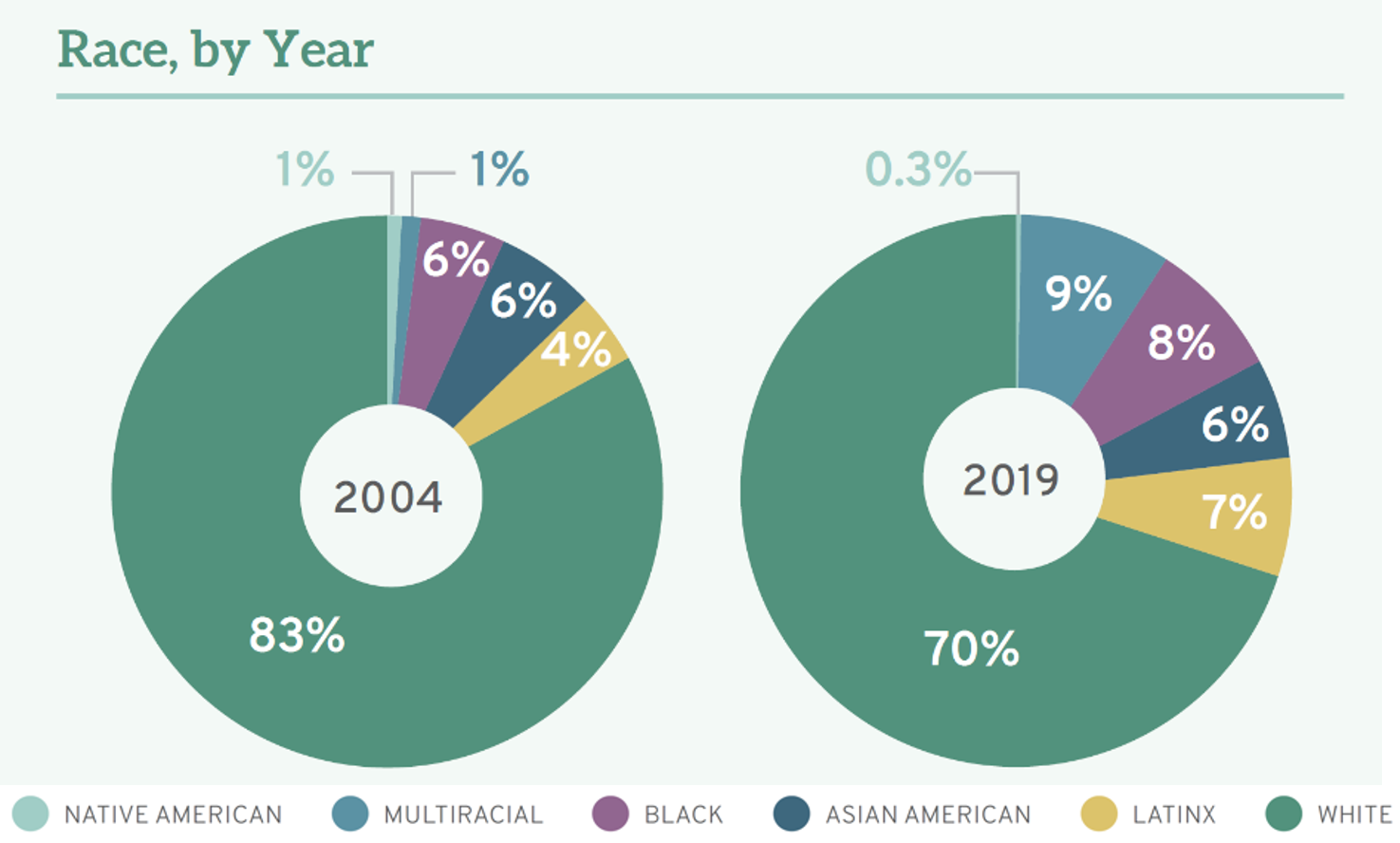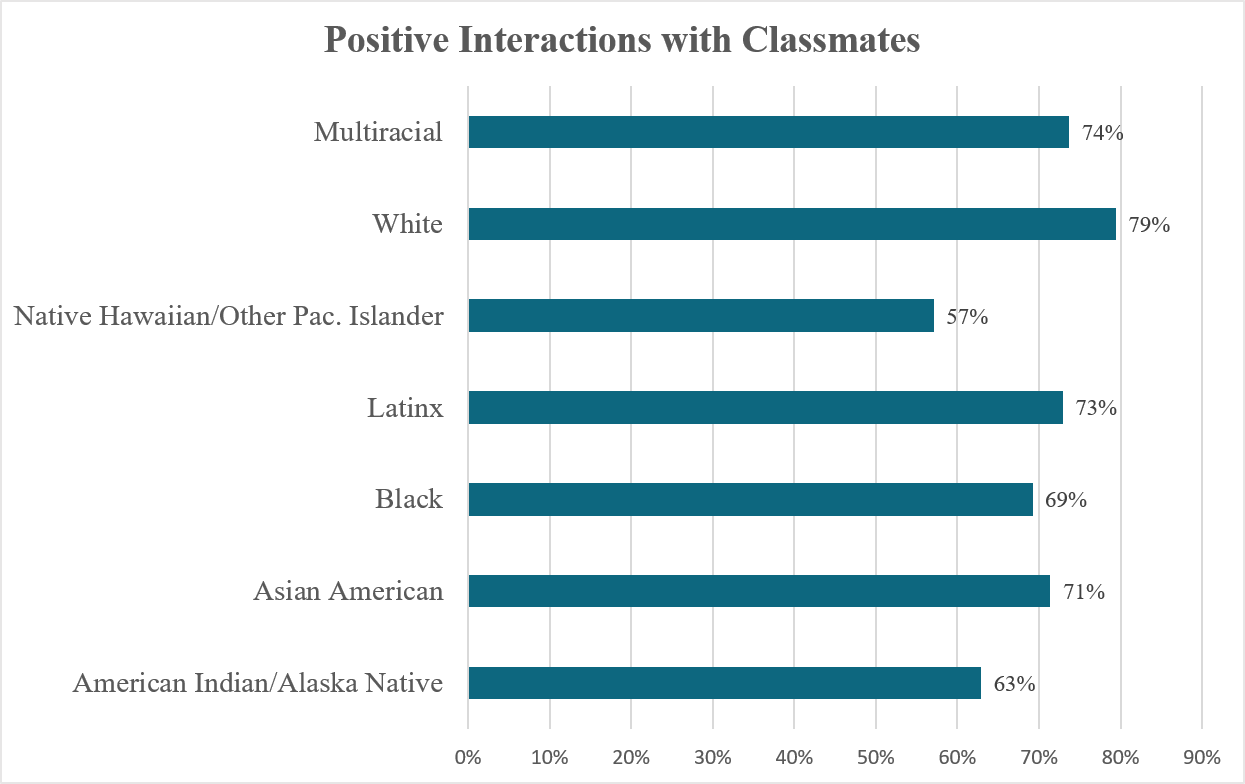
Valuing the Unique Experiences of Multiracial Students
Meera E. Deo
The Honorable Vaino Spencer Professor of Law, Southwestern Law School
Director, Law School Survey of Student Engagement
Multiracial people—those who identify as belonging to two or more racial groups—are a growing proportion of the US population. There are also more multiracial students in law school today than ever before. LSSSE data reveal that multiracial students comprised 9% of all law students in 2019, though only 1% of LSSSE respondents identified as multiracial in 2004.

Like other pan-ethnic groups, there is significant diversity within the broad umbrella group encompassing multiracial people. Their heritage can draw from ancestors who are Black, White, Asian American, Latinx, Native American, Middle Eastern, and more. And, of course, what a multiracial person with Black and Asian ancestry experiences in law school may be very different from what a Latinx and White student encounters. Despite this intra-group diversity, multiracial students as a whole do share some commonalities. Their experiences as a group tend to be different from those of White students but also from those of other students of color. I explore some of these distinctions in my new article, The End of Affirmative Action, noting: “Like their heritage, the multiracial experience is a combination of different backgrounds, often falling somewhere between those of other people of color and whites.”
We can examine the unique experiences of multiracial students by examining both quantitative and qualitative measures. First, let’s consider debt. When LSSSE asked all students about the total amount of educational debt they expected to accrue by graduation, 28% of Black and Latinx students and 13% of White students expected to owe over $160,000. Debt levels of multiracial law students fall between the range of White and Black/Latinx students: 21% of multiracial students expect to owe over $160,000.

Moving beyond the debt numbers, we can also consider the quality of interactions between students. The LSSSE survey asks each student to rate the quality of their interactions with their classmates on a scale of 1 to 7, where 1 references unfriendly classmates and strong alienation and 7 suggests friendly classmates and strong belonging. White students are more likely than any other racial/ethnic group to enjoy positive relationships with classmates, with 79% rating these interactions as 5 or higher. Lower percentages of Native American (63%), Black (69%), and Asian American (71%) students have equally positive relationships with classmates. As with debt, the experiences of multiracial students fall between those of White students and other students of color, with 74% rating their interactions with fellow students as positive.

Degli Stati membri dell’UE rappresentati dal Consiglio d’Europa https://unafarmacia24.com/ (CdE), dei gruppi di lavoro del CdE e del Parlamento europeo. I singoli Stati membri dell’UE sono rappresentati in questo processo dai gruppi di lavoro del CoE.
Despite experiences that clearly distinguish them from their classmates, multiracial students are rarely considered as a separate group. In fact, as I write in my new article, “Multiracial applicants and students are virtually invisible when it comes to considering affirmative action or educational diversity specifically.” Obviously, students with different experiences have unique contributions to make in the classroom as well as different needs to maximize their academic and professional success. Instead of ignoring them as a group, we should draw from the data to recognize the unique experiences of multiracial students. Administrators should also make efforts to meet the equity and inclusion needs of multiracial students that may be different from those of their classmates. Documenting, recognizing, and valuing our differences is how we improve diversity, equity, and inclusion in legal education.
